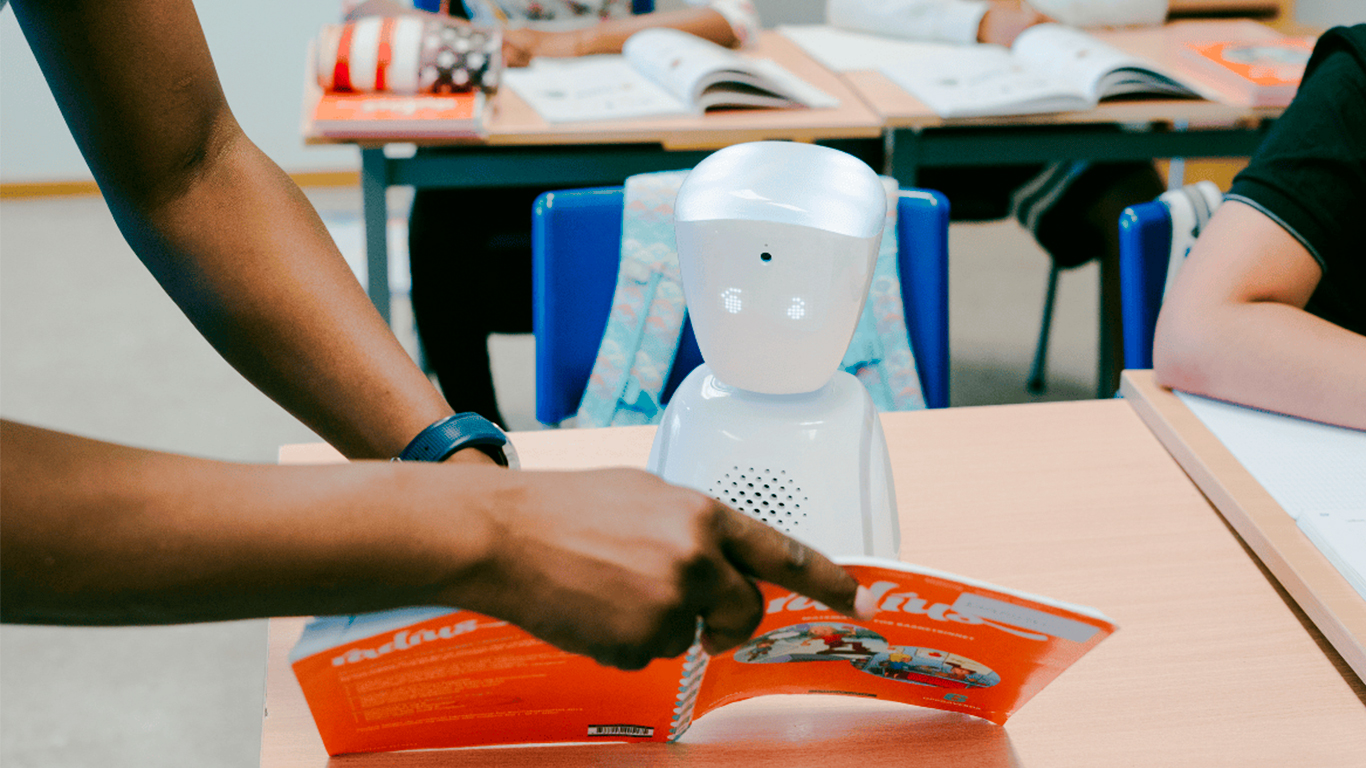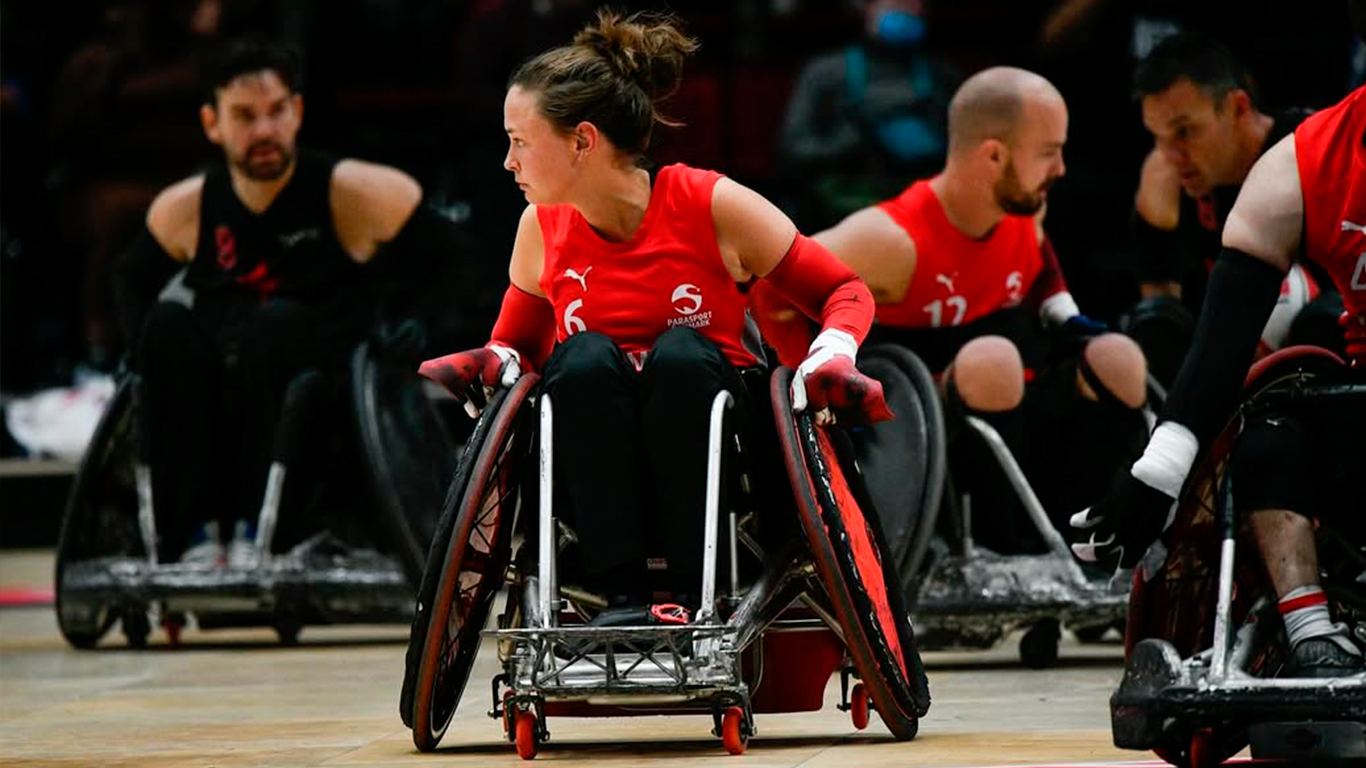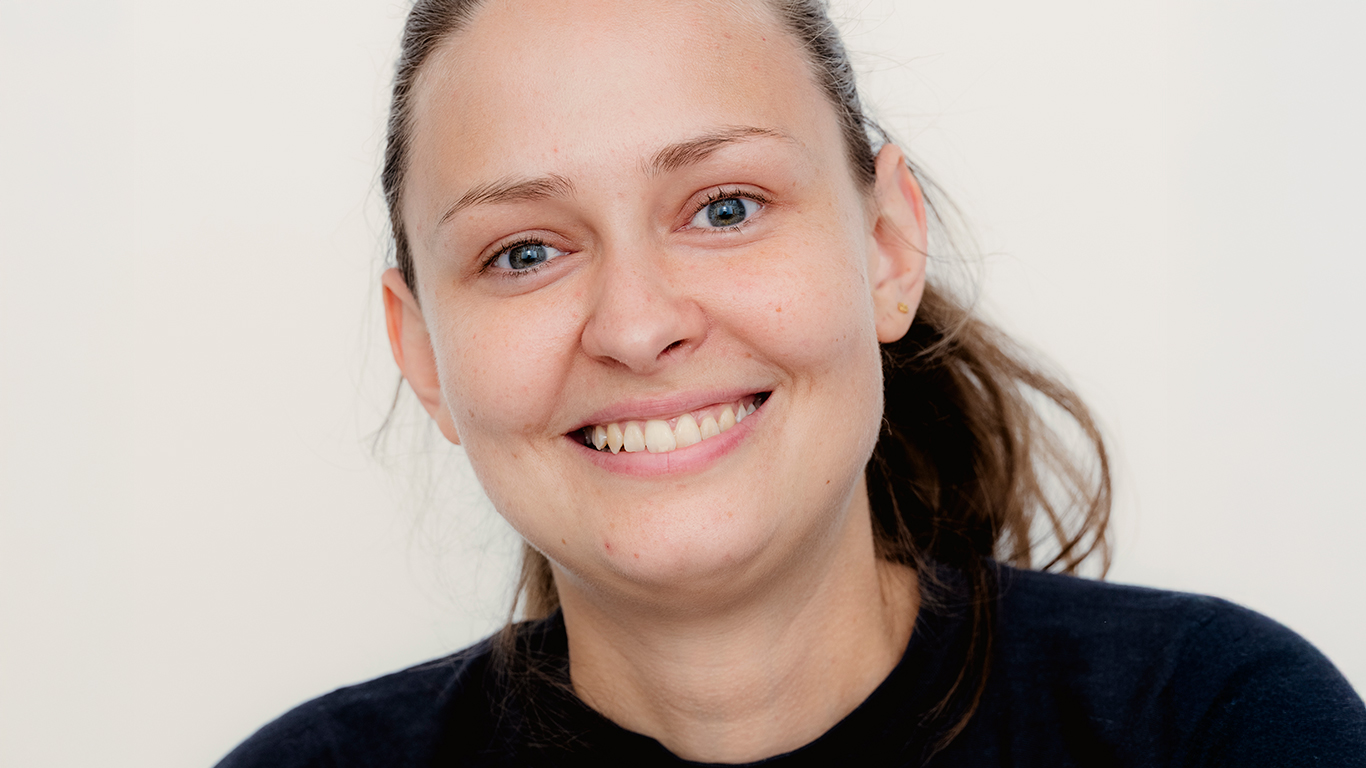My name is Sofie Skoubo, and I’m a PhD student at the Department of Public Health, Aarhus University, The Danish National Rehabilitation Center for Neuromuscular Diseases and cooperate with the Norwegian company No Isolation.
Since 2020, I have worked with telepresence robots for children with cancer, neuromuscular diseases, and anxiety, and my research focuses on educational support with the help of the telepresence robot AV1 for students with neuromuscular disease.
Besides that, I am a patient with neuromuscular disease and a two-time Paralympian athlete, recently taking part in the 2024 Paris Paralympic Games.
Why do you think education is so relevant a topic for the rare disease community?
I think education is one of the big pillars of our society because it helps develop a voice for people in the rare disease community. I’ve seen how education has changed my life as a person with a neuromuscular disease, and I believe the same could happen for many more people with rare diseases than what we see today.
Everyone has the right to education, yet we see that, at a certain point, a student with a rare disease may not be capable of attending because of the disease’s side effects.
You’re developing an idea to help make education more accessible for rare disease patients. Could you tell us more about it?
My PhD project is about using technology to reduce school absence for student with neuromuscular diseases, to make it possible for them to be in the classroom on the days when they’re not physically able to attend due to side effects of their disease
It consists of a little robot you can place in the classroom while the student is at home or in the hospital with a tablet or iPad. Patients can then connect to the classroom, be with their peers, and follow the teaching.
Imagine a child who must go to the hospital for regular treatment, and the hospital is an hour or two away. That makes it impossible for the child to attend school normally. With this technology, the child can connect to the classroom while driving to the hospital, during treatment, and on the way back—so they don’t miss the whole school day just because of the treatment.
Most legislation in Scandinavia states that if a child is unable to attend school, they have the right to receive home instruction, by which a teacher comes to their home. And although this does help academically, there’s a big social component that’s missing. There’s nothing in the legislation about being part of the community or society.
Your initiative works both ways, then: keeping the child connected to classroom and studies, while also making their presence felt in the classroom through an avatar. The scalability seems huge.
I see a big potential. From what I’ve seen in research over the last few years, more students who suffer from school absence for various reasons could use technology to access the classroom. I think this could be a game-changer, or at least a tool that becomes part of the toolbox in the future.
If we can remove some of the barriers to accessing education—both visible and invisible—then we could support people with rare diseases in the right way. Not just to access education, for instance, but also to complete it.
There are surely downsides to this. For instance, using a robot to compensate for the social relations part seems complex.
In a perfect world, all students attend school physically and experience being a normal child in the school environment. However, that is not possible for everyone, so this is a good alternative solution.
Of course, the ideal is not for the child to sit at home with a robot and only participate physically in school, but to combine physical attention and virtual presence to secure completion of education in the end.
I have observed downsides in different initiatives, including my research. Talking to students with different diseases, I have identified some potential responsibility voids, like who oversees bringing the robot into the classroom? How can we include the robot in more dynamic teaching situations, like group work or blackboard teaching?
Other challenges are related to its novelty. This technology is still very new. When you put this robot in a classroom, nobody knows how to talk to it, because we’re not used to speaking to or interacting with a robot. We need to figure out how to start integrating it in the classroom.
I think we should accept this new technology and figure out the right tools to use it in the community and in education.

Robot in the classroom. Photo credit: noisolation.com
Is this a situation that you’ve experienced in your own life?
When I was younger, factors like fatigue weren’t discussed, and that was hard. My parents were very focused on me getting an education, so sometimes I was forced to go to school even though I was so tired that I could not follow the class.
Looking back, I think an initiative such as this one could have helped me focus more on learning and be more active in the school’s social life.
Because when I was in higher education, particularly, it was really hard for me to follow a full-time education and still be able to take care of myself and my disease.
It has always been a balance. While attending school provides the best educational experience, not everyone can do that.

Many will be surprised to find out you’re a Paralympian athlete.
I do have a neuromuscular disease, but I’m still able to live a normal life. I still have a voice, and I can use it to promote change for others in the same situation, making it easier for them to live a normal life and to feel included in the society.
But there’s still a long way ahead in making the society inclusive for everyone, especially when you sit in a wheelchair, for example, and you are constantly thinking about accessibility or anticipating challenges, always dealing with barriers just to be able to be present and to use your voice.
Sport is a great way to show that you can do as well as anyone else. The Paralympics are a great platform for showing that we are as cool as everyone else and can compete and win, just as Olympic athletes do.
It comes to show that we can have equal talent in whatever sport we choose to participate in.
Follow Sofie on Instagram.

